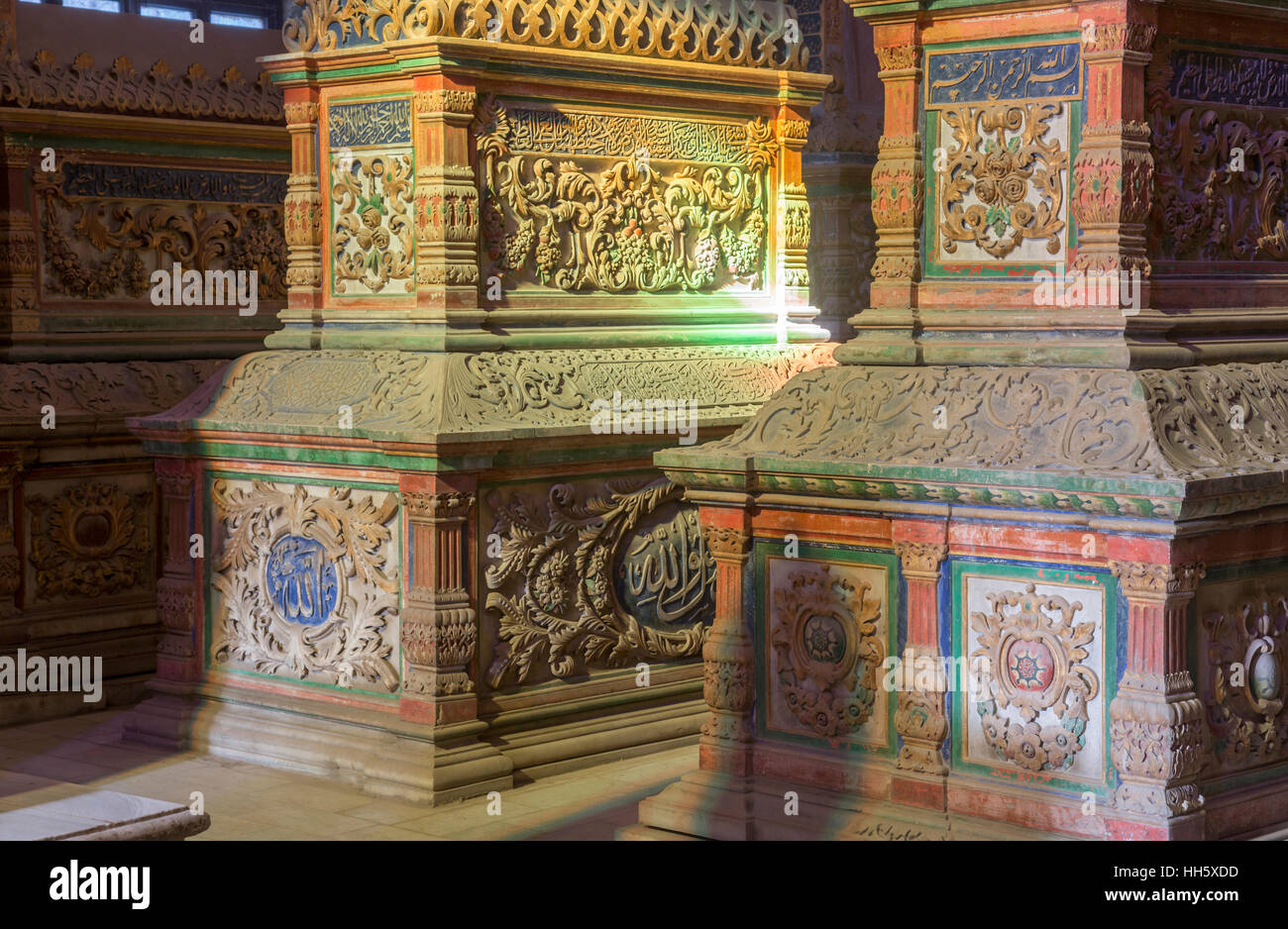Hosh al-Basha, or Hosh el-Basha, funerary complex, southern cemetery, Cairo, Egypt

Image details
Contributor:
B.O'Kane / Alamy Stock PhotoImage ID:
HH5XDDFile size:
51.4 MB (2.6 MB Compressed download)Releases:
Model - no | Property - noDo I need a release?Dimensions:
5246 x 3425 px | 44.4 x 29 cm | 17.5 x 11.4 inches | 300dpiDate taken:
6 March 2013Location:
Cairo, EgyptMore information:
Hosh al-Basha is an Arabic name meaning, courtyard of the Pasha, which was given to the Royal family graveyards and more specifically, the (many) descendents of Mohammed Ali's family. The Tomb Complex was built in 1854 and in it are buried Mohammed Ali's wives, children, his close servants, distinguished statesmen and counselors. The interior layout of the domed rooms is quite irregular. The first memorial, upon entering, in a room by itself, is the towering white marble tomb of the mother of Khedive Tawfiq (1879-92). Next on the left, in a tomb surrounded by an immense bronze grille, lies Tusun. Immediately in front of him lies Isma'il. Two domes over, the tall deeply carved cenotaph is that of Ibrahim Pasha, who died just weeks before his father in 1850. under the dome next to Tusun are the cenotaphs of 'Abbas I, his son Ilhami Pasha, his wife, and Ahmad Rif'at, son of Ibrahim Pasha. The cenotaphs are exuberantly carved with flowers, garlands, and fronds and are gilded and painted in bright colors. A stela at the head topped by a distinctive coiffure or head-covering indicates the rank and sex of the deceased. Men are identified by turbans or fezzes, women by coronets. For the women there is a further distinction: braids in relief denote a royal mother; painted braids, a royal wife; and a coil of loosely caught hair, often sprinkled with golden tears, indicates a virgin princess.